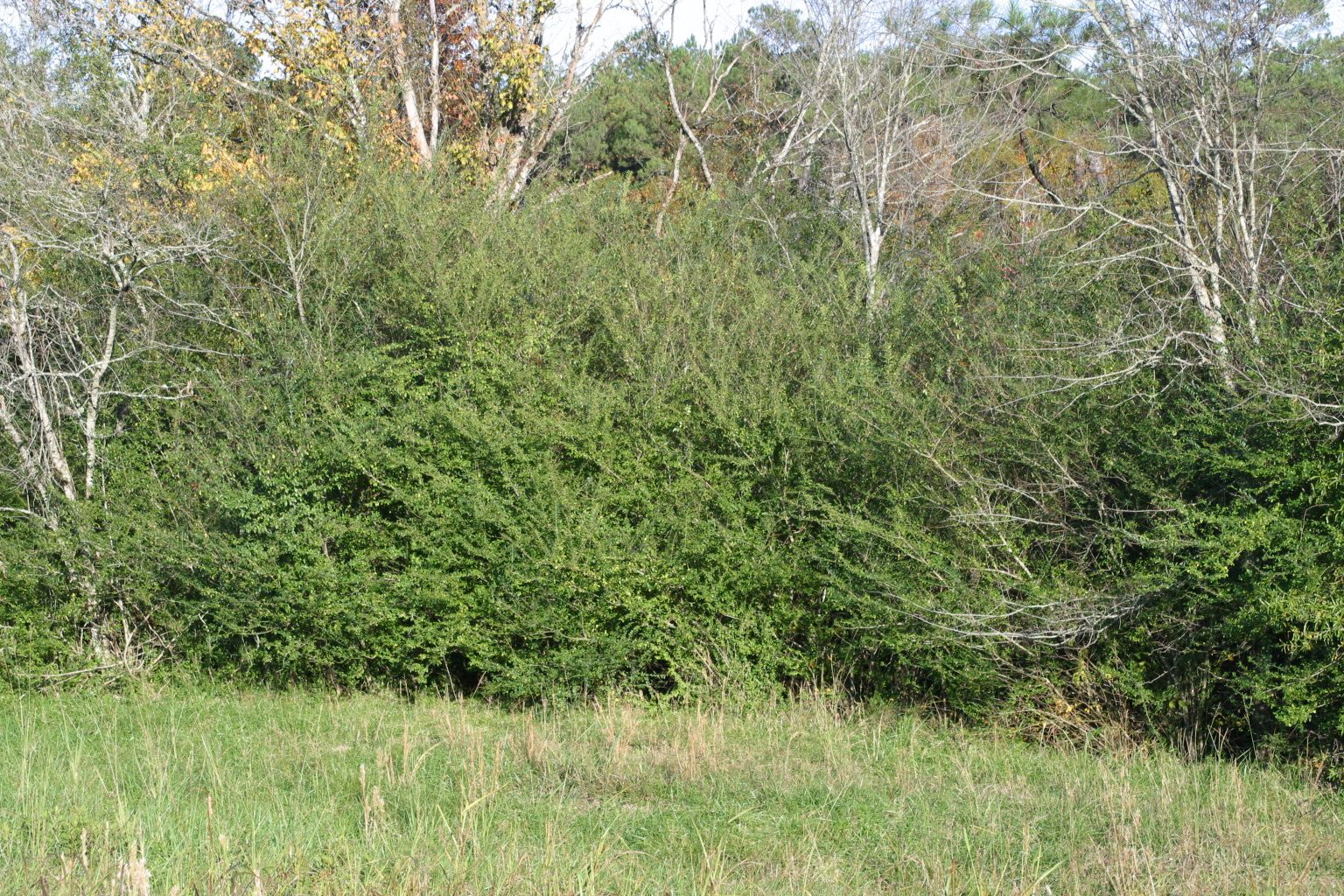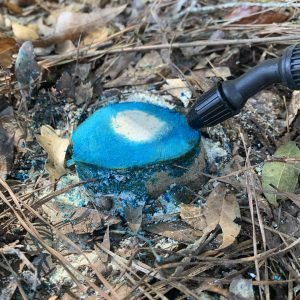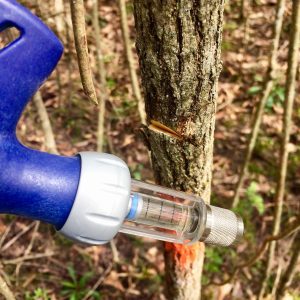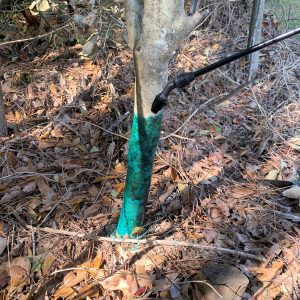Forestry & Wildlife

Even when cooler weather arrives and most leaves of deciduous species have fallen, it is still a good time to control certain invasive weeds. When it comes to woody plants, there are few non-native species as widespread and as troublesome as Chinese privet. The means by which we manage Chinese privet can be unique compared to the methods typically used for more common herbaceous weeds in row crops, turf, ornamentals, and forage systems.
Background
A 2021 study from the University of Massachusetts reported that, “61 percent of 1,285 plant species identified as invasive in the U.S. remain available through the plant trade, including 50 percent of state-regulated species and 20 percent of federal noxious weeds, with vendors in all the lower 48 states.”
Chinese privet (Ligustrum sinense) and callery pear (Pyrus calleryana) are just two species that were introduced in this manner and have now become invasive across the Southeast. Chinese privet was introduced in 1852 from Asia, and it now covers more than 1 million acres in Alabama alone. Although Chinese privet is the most common in Alabama, there are seven different Ligustrum species that occur in the Southeast.
Identification
Chinese privet is a medium-sized shrub or small evergreen to semi-evergreen tree that can reach up to 30 feet in height. It has oval shaped, lustrous green leaves that occur opposite one another in two rows along stems. The trunk and stems are covered in a thin, smooth bark that is light gray to brownish with white blotches. Plants produce an abundance of white flowers in April to June which mature into dense elliptical drupes about 0.2 inches in diameter that are pale green in the summer and then ripen to dark purple to black in late fall.
The Problem
Like many other troublesome weeds, Chinese privet spreads by seed and roots, is very adaptive, and can tolerate diverse soil and light conditions. It has escaped cultivation and naturalized in a wide range of environments, from forest understories, riparian areas, rights-of-way, fencelines, and field edges. Productive pastures and hayfields can be threatened by privet’s encroachment where seed are dispersed by birds and mammals. Unsuccessful attempts that result in partial control may easily result in multiple stem resprouts.
Control Methods and Timing
Mechanical
It is possible to control Chinese privet by hand pulling, mulching, or use of other tractor equipment. The key is to remove as much of the viable stems and roots as possible. Because privet is generally a shallow-rooted plant, stems less than about a half inch in diameter may be removed from the ground by hand. Mowing or trimming alone is usually discouraged because this will stimulate growth and result in denser stands.
Chemical
Broadcast herbicide applications applied to foliage can be effective if you are treating larger areas where a spray boom can effectively reach over the top of the privet canopy. Foliar treatments are most effective when applied from summer to fall. If privet populations occur in forage pastures or hayfields, Remedy Ultra or Vastlan may be broadcast-applied at 2 quarts per acre or in a 2 percent volume per volume (v/v) solution with at least 20 gallons of water per acre (GPA) output. Higher output volume allows herbicide to penetrate further into thick foliage canopies.
Cut stump, basal bark, or hack-and-squirt treatments are also effective on Chinese privet and can be applied throughout the year. These methods are often preferred on larger plants or if they occur adjacent to sensitive species that need to be protected from collateral damage. These individual plant treatments (IPT) may arguably be more successful if done November through February in Alabama. As a perennial woody shrub/tree, sap flow usually concentrates in the roots for the winter and then rises again in the spring. If these concentrated herbicide treatments are made during the fall, herbicides can naturally translocate into the plants’ system for a more effective kill. The thin bark of privet also allows easy absorption of these herbicide products when combined with a basal oil as a carrier.
Cut-Stump Method
When using the cut stump method, it is important to cut the stump as close to the ground as possible and quickly apply the appropriate herbicide to ensure absorption (Fig. 1). Recommended herbicide options for cut stump are either a 25 percent solution of a glyphosate product (Roundup) that contains at least 41 percent active ingredient (32 oz. of product per gallon of water); a 25 percent solution of a triclopyr amine herbicide (Garlon 3A) that is at least 44 percent active ingredient, or a 10 percent solution of imazapyr (Arsenal) that contains at least 27.8 percent active ingredient.
Hack-and-Squirt
When using the hack-and-squirt method, make one incision at a 45-degree angle for every 2 to 3 inches in stem diameter (Fig. 2). Squirt 1 ml of undiluted herbicide in each incision so that it comes in direct contact with the cambium layer.
Basal Bark
Basal bark applications involve spraying herbicide in a basal oil or diesel fuel solution around the lower 12-16 inches of each trunk (Fig. 3). Using a 20 percent triclopyr ester solution (Remedy Ultra) or a 20 percent imazapyr solution (Arsenal or Polaris) has proven effective especially when applied in the fall or winter. Patience is needed following any of these treatments as symptoms will be slow and you may not see results until the following spring. Please read and follow all label recommendations.
- Figure 1. Cut stump treatments should be applied as soon as possible following cutting to improve herbicide absorption.
- Figure 2. Hack-and-squirt treatments are a good option for stem diameters less than 6 inches. A livestock dose gun helps administer the exact amount of product per hack.
- Figure 3. Basal bark herbicide treatments are best applied to the lower 16 inches using a basal oil product or diesel carrier.




